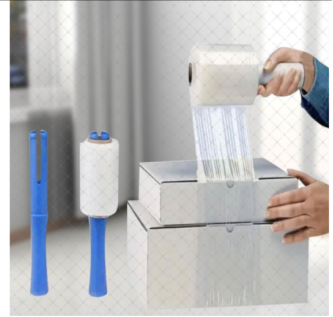biodegradable water pouch
The Future of Sustainable Hydration Biodegradable Water Pouches
In an age where convenience and environmental sustainability are often at odds, innovative solutions are emerging to bridge the gap between consumer needs and ecological health. One such solution is the biodegradable water pouch, a product that holds great promise for both hydration and environmental protection. This article explores the significance of biodegradable water pouches, their benefits, and their potential impact on reducing plastic waste.
Conventional plastic water bottles have been a staple in our daily lives for decades, offering a quick and portable solution for hydration. However, the environmental toll of single-use plastics has become increasingly apparent. According to a study by the World Economic Forum, by 2050, there could be more plastic in the oceans than fish if current trends continue. This alarming statistic has spurred a search for alternatives, and biodegradable water pouches have emerged as a compelling option.
Biodegradable water pouches are typically made from materials that can decompose naturally within a short period of time, unlike traditional plastics that can take hundreds of years to break down. These pouches are often composed of bioplastics derived from renewable sources such as cornstarch, sugarcane, or other plant-based materials. This innovative approach not only reduces the reliance on fossil fuels but also minimizes the environmental impact associated with plastic disposal. When exposed to the right conditions, biodegradable pouches can break down into natural substances, returning to the earth and preventing long-term pollution.
One of the key advantages of biodegradable water pouches is their ability to maintain the convenience of traditional bottled water. They are lightweight, portable, and designed for on-the-go lifestyles, making them ideal for outdoor activities, travel, or everyday use. Consumers seeking hydration solutions no longer have to compromise on environmental values for convenience. With biodegradable pouches, users can enjoy the benefits of easy hydration while contributing to the reduction of plastic waste.
biodegradable water pouch

In addition to their environmental advantages, biodegradable water pouches can also support public health initiatives. Access to clean and safe drinking water is a critical global issue. While many regions still struggle with water quality, providing water in biodegradable pouches can offer a practical solution. This method can help reduce the amount of waterborne diseases by ensuring safe, drinkable water reaches communities in need without contributing to the plastic waste crisis.
Moreover, the production of biodegradable water pouches can stimulate local economies. By sourcing materials from local agricultural products and utilizing local manufacturers, communities can enhance their economic resilience while promoting sustainability. This creates a win-win situation where people not only gain access to essential resources but also have the opportunity to support local businesses that adhere to eco-friendly practices.
Despite the myriad of benefits, there are challenges to be addressed before biodegradable water pouches can become a mainstream solution. Education and awareness about proper disposal methods are crucial. Many consumers may mistakenly think that biodegradable products can be thrown away without consideration for the composting or industrial facilities required for proper decomposition. Therefore, regulations and guidelines must be established to ensure that these products are disposed of correctly and that consumers understand their role in the lifecycle of biodegradable materials.
In conclusion, biodegradable water pouches represent a necessary step towards sustainable hydration solutions in a world increasingly plagued by plastic pollution. By marrying convenience with eco-consciousness, these innovative products not only address hydration needs but also promote a healthier planet. As awareness grows and technology advances, the hope is that biodegradable pouches will become a common sight in homes, outdoor events, and retail spaces, paving the way for a greener future. Together, we can embrace alternatives that protect our environment and promote a sustainable lifestyle for generations to come.
-
The Best Uses for Small Trash Bags in Daily LifeNewsJul.01,2025
-
Stylish Reusable Grocery Bags TrendsNewsJul.01,2025
-
Shipping Advantages of Using Bubble Envelopes BulkNewsJul.01,2025
-
How Compostable Mailing Bags Reduce Environmental ImpactNewsJul.01,2025
-
Environmentally - Friendly Bulk Poly MailersNewsJul.01,2025
-
Eco Friendly Custom Laminated Tote BagsNewsJul.01,2025
-
Have the freedom of customizing your custom mailers any way you want! Our dedicated packaging support will help deliver you the mailing experience you need to elevate your shipping experience to the next level! Start making a strong impression on your customers and stand out from your competitors! -
LIYA uses high quality raw materials which directly purchased from large enterprises domestic and overseas such as PetroChina, Sinopec, Sabic, Equate, ExxonMobil, Dow Chemical, Total, and Borouge, ensuring the price advantage and quality of the raw materials. -
LIYA uses high quality raw materials which directly purchased from large enterprises domestic and overseas such as PetroChina, Sinopec, Sabic, Equate, ExxonMobil, Dow Chemical, Total, and Borouge, ensuring the price advantage and quality of the raw materials.





